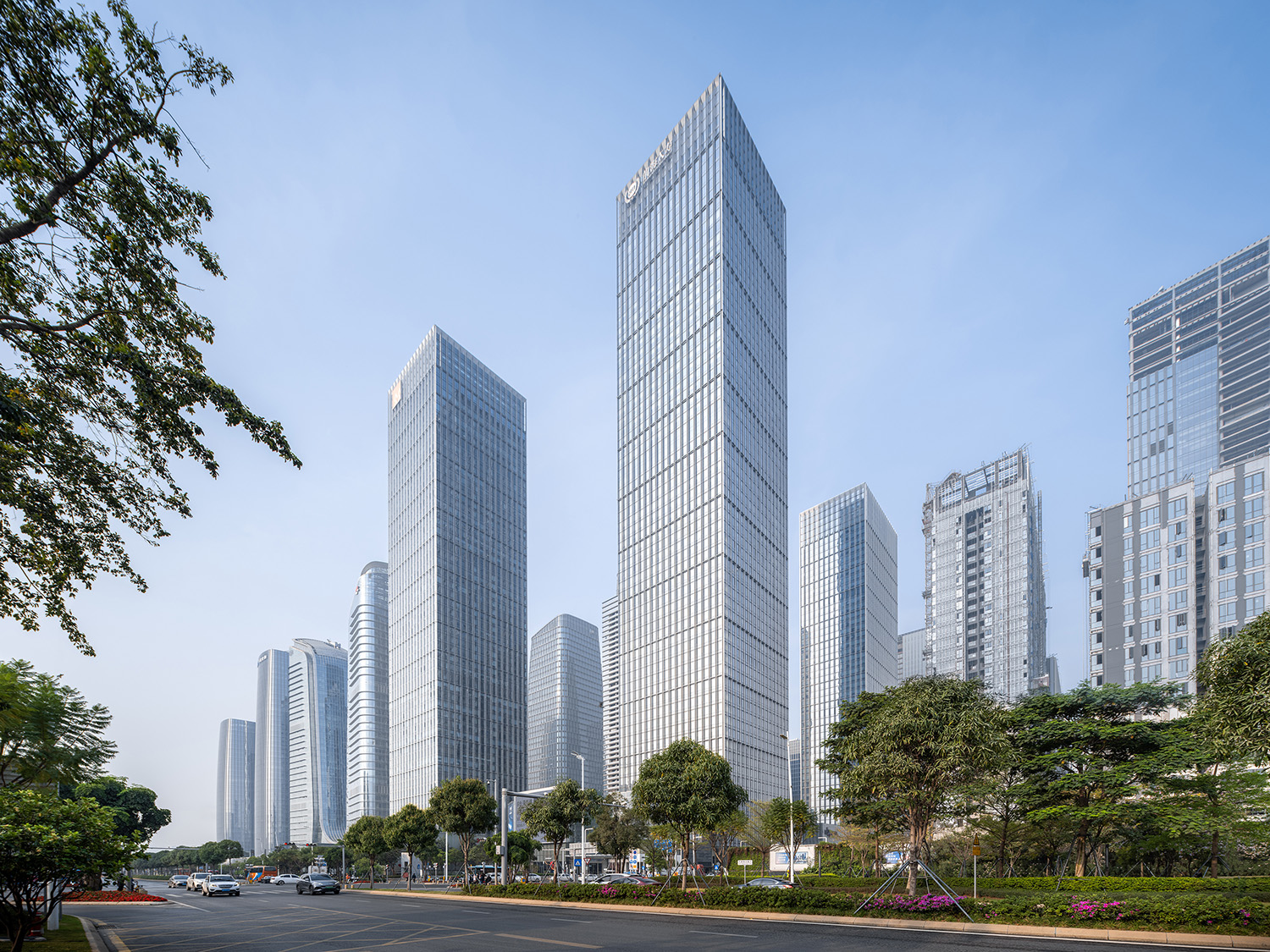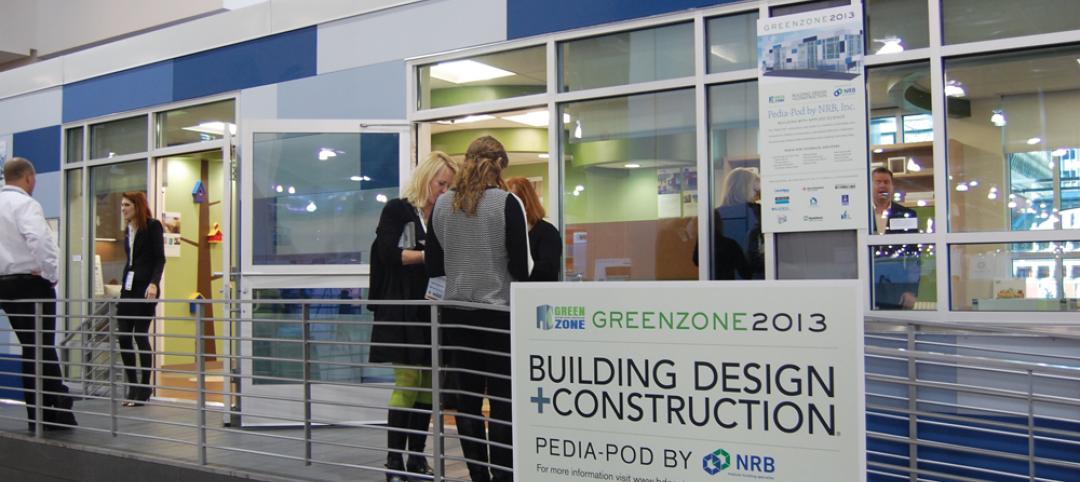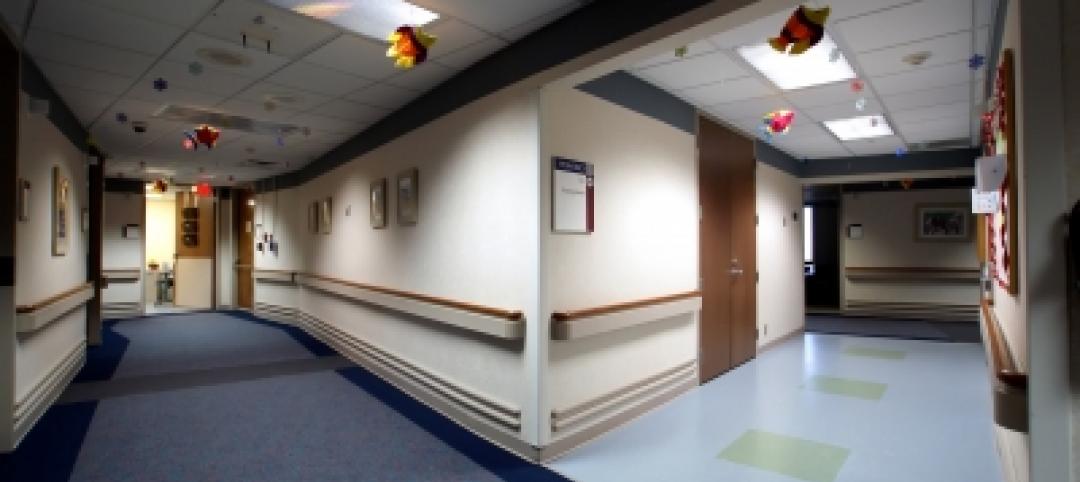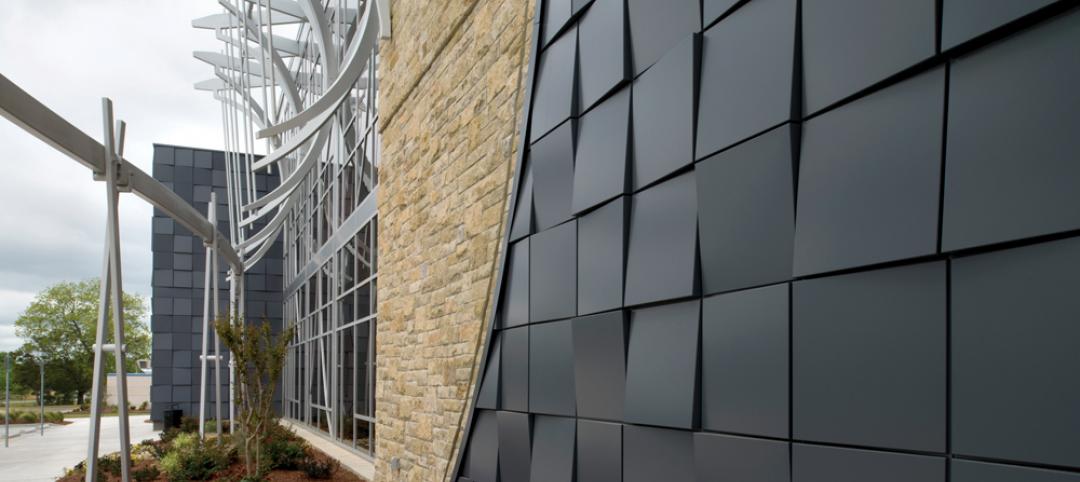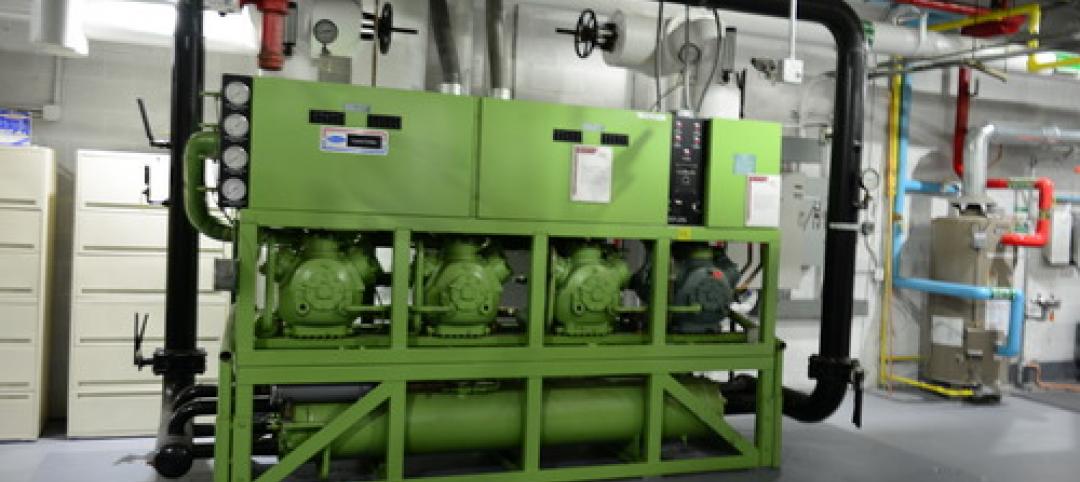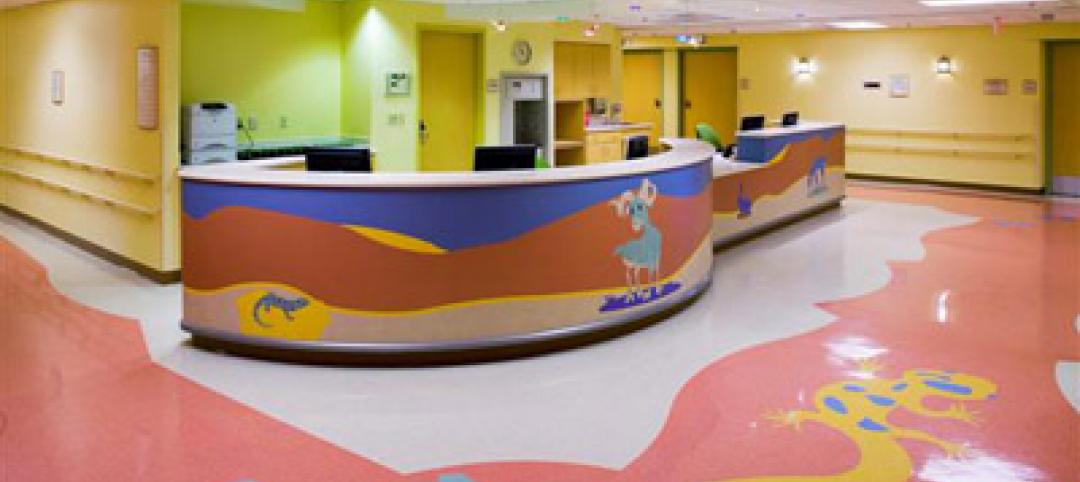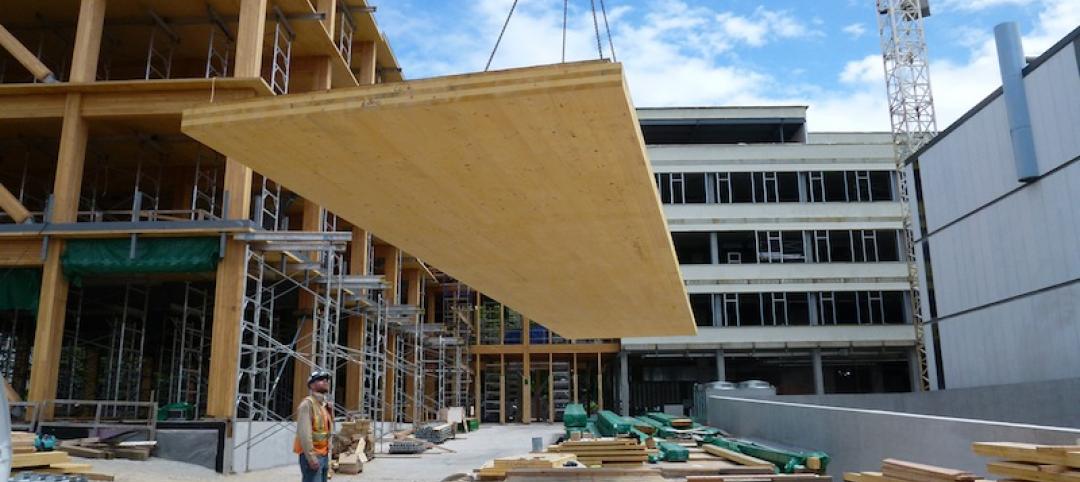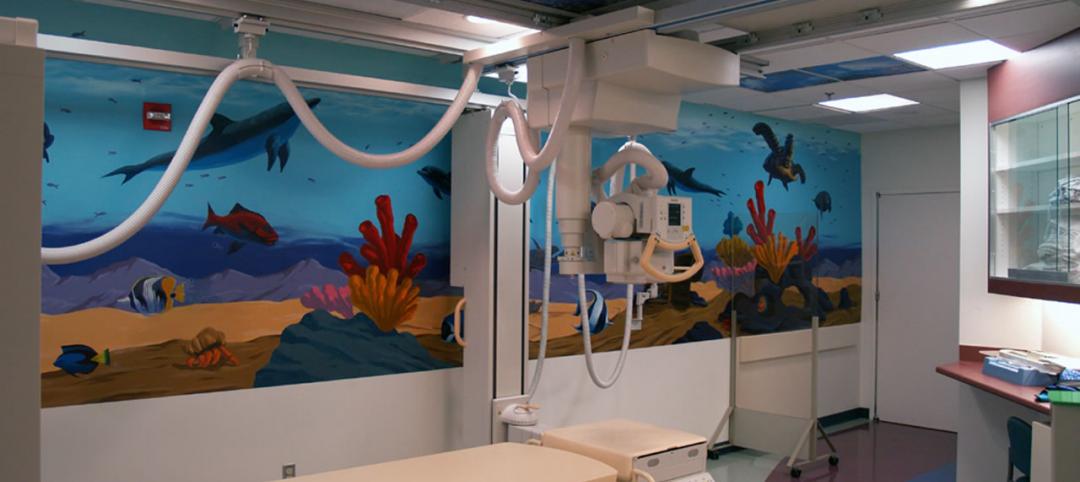Chicago-based global architecture firm Goettsch Partners (GP) recently announced the completion of its largest project in China to date: the China Resources Qianhai Center, a mixed-use complex in the Qianhai district of Shenzhen. Developed by CR Land, the project includes five towers totaling almost 472,000 square meters (4.6 million sf).
The overall development, which totals more than 500,000 square meters (5.4 million sf), comprises three office towers, a hotel tower, an apartment tower, and a terraced retail complex. GP designed the towers and co-developed the master plan with UK-based design firm Benoy, which also designed the retail complex.
To prioritize the pedestrian experience, the project team combined the original eight-parcel site into two larger blocks, unifying the development and minimizing vehicular traffic within the site. The five towers are arranged around the site’s perimeter to create an urban street wall while also opening the site’s interior for pedestrians. Inside this “financial canyon,” terraced levels reduce the scale of the urban streetscape and provide multiple options for social interaction. In addition, the pedestrian canyon’s lush landscape supports Shenzhen’s “sponge city” requirements to absorb rain and prevent flooding.
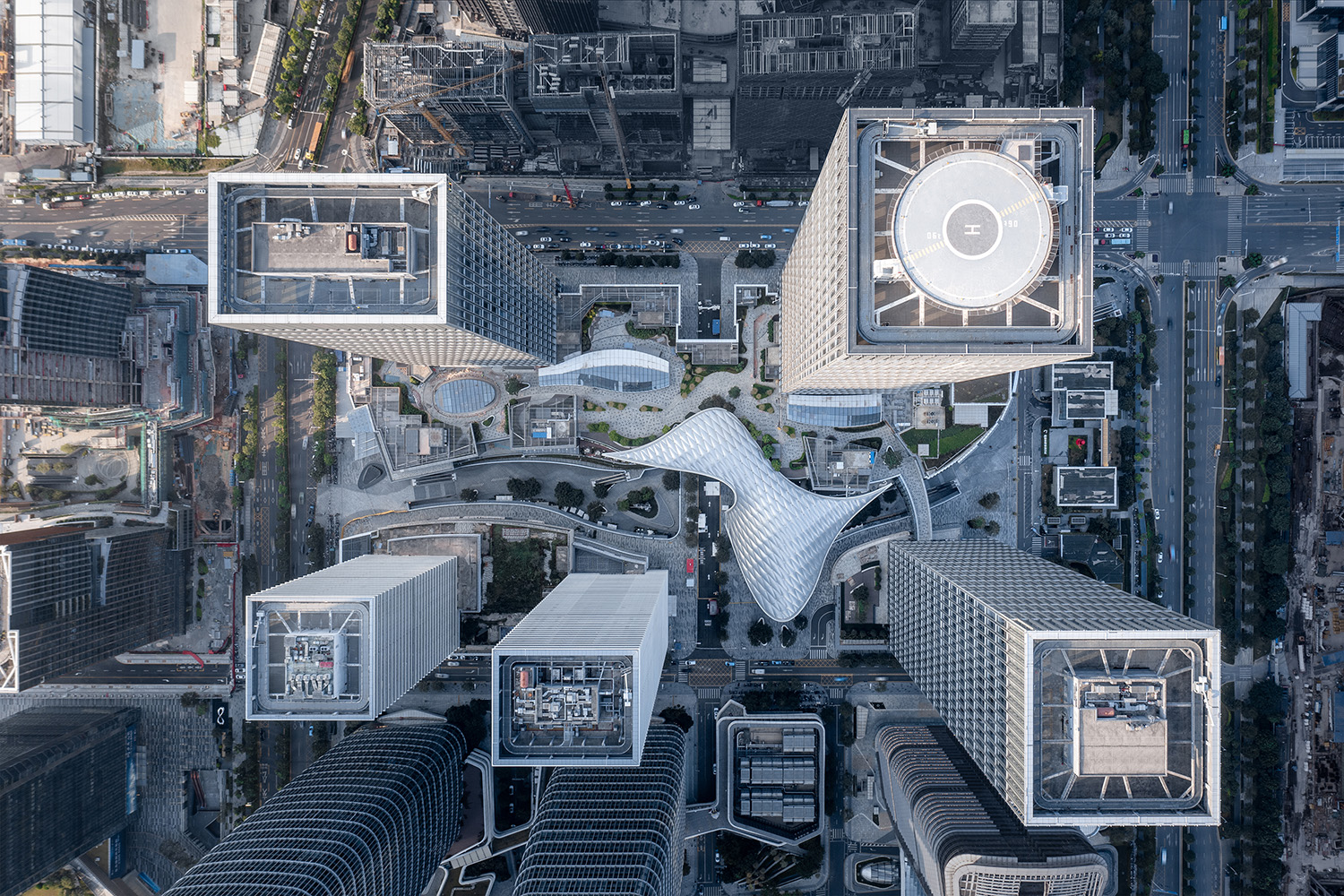
As one of the first developments within the recently created Qianhai district, the China Resources Qianhai Center supports a live-work environment to draw people to the neighborhood. The development also aims to project “a character of reserved elegance, quality, and permanence” to attract global finance companies, according to a press statement. As an example: The windows can open and close within the shadows of the building’s double-fin sunshades, reducing visual disruption and maintaining visual cohesion.
On the Building Team:
Owner/developer: China Resources Land Co., Ltd.
Design architects: Goettsch Partners and Benoy
Architect of record, MEP engineer of record, and structural engineer of record: Architectural Design and Research Institute of Guangdong
MEP design engineer: Meinhardt
Structural design engineer: WSP
Construction manager: China State Construction Engineering Corporation
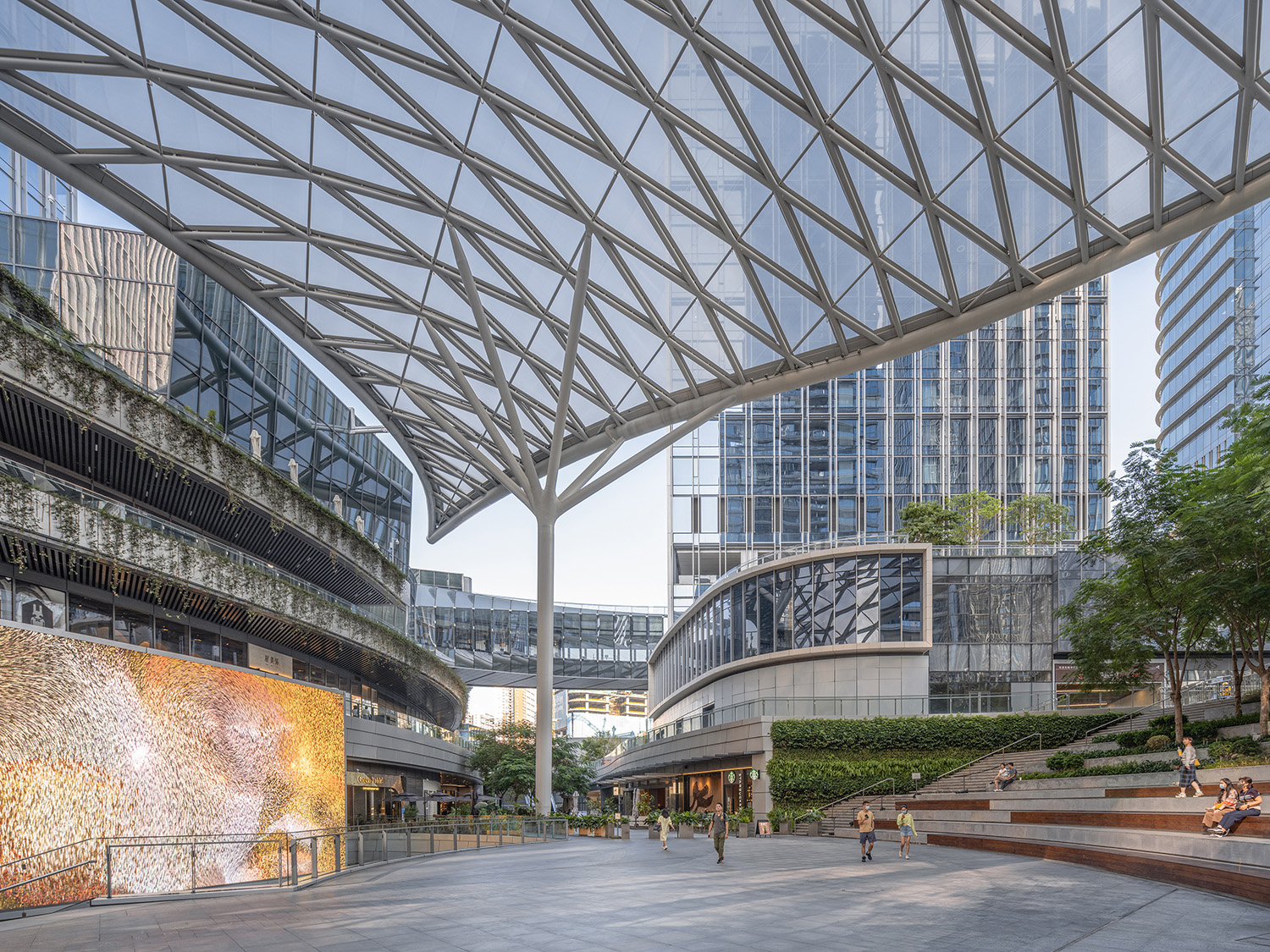
China Resources Qianhai Center, Planning Animation (c) Goettsch Partners from Goettsch Partners on Vimeo.
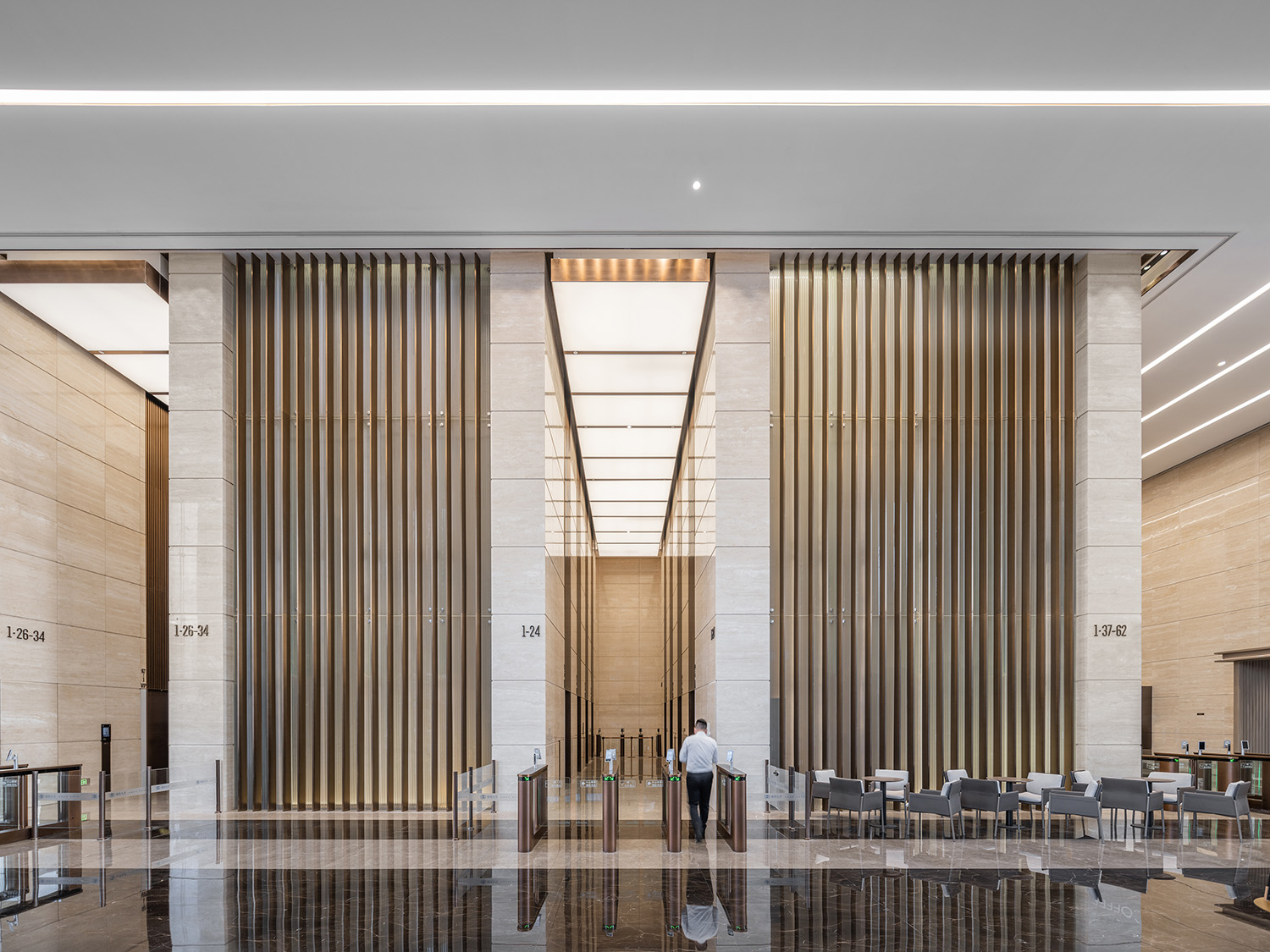
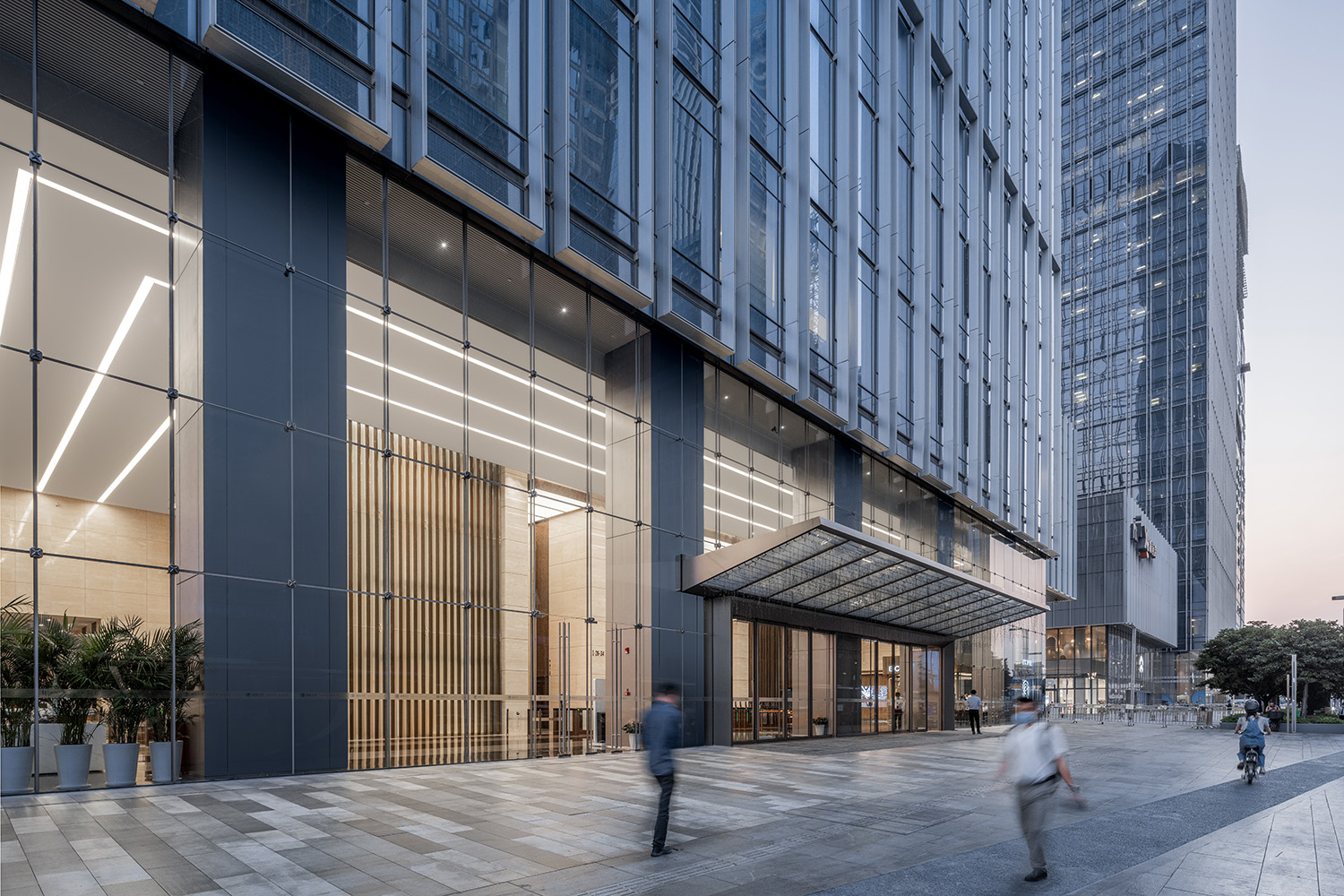
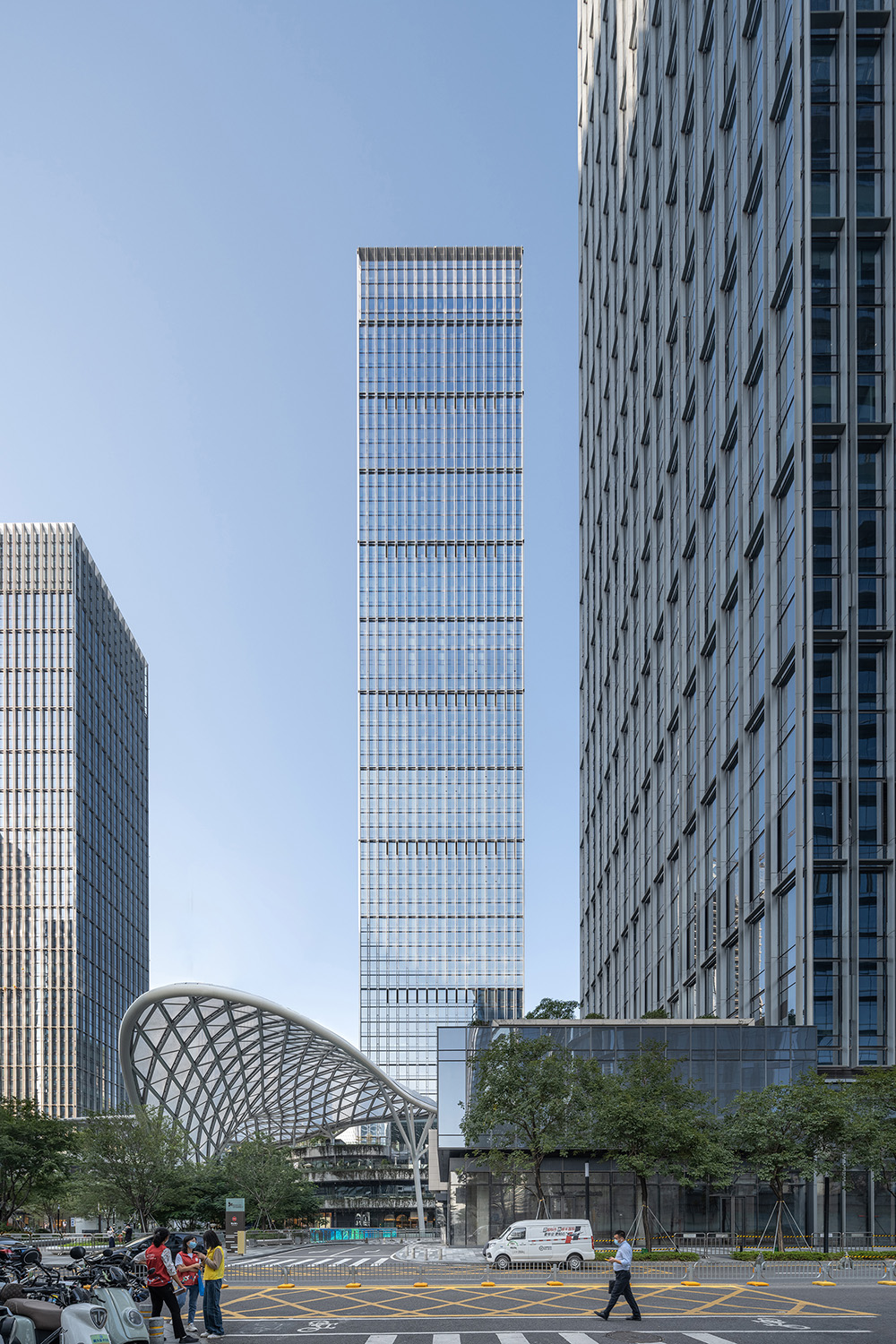

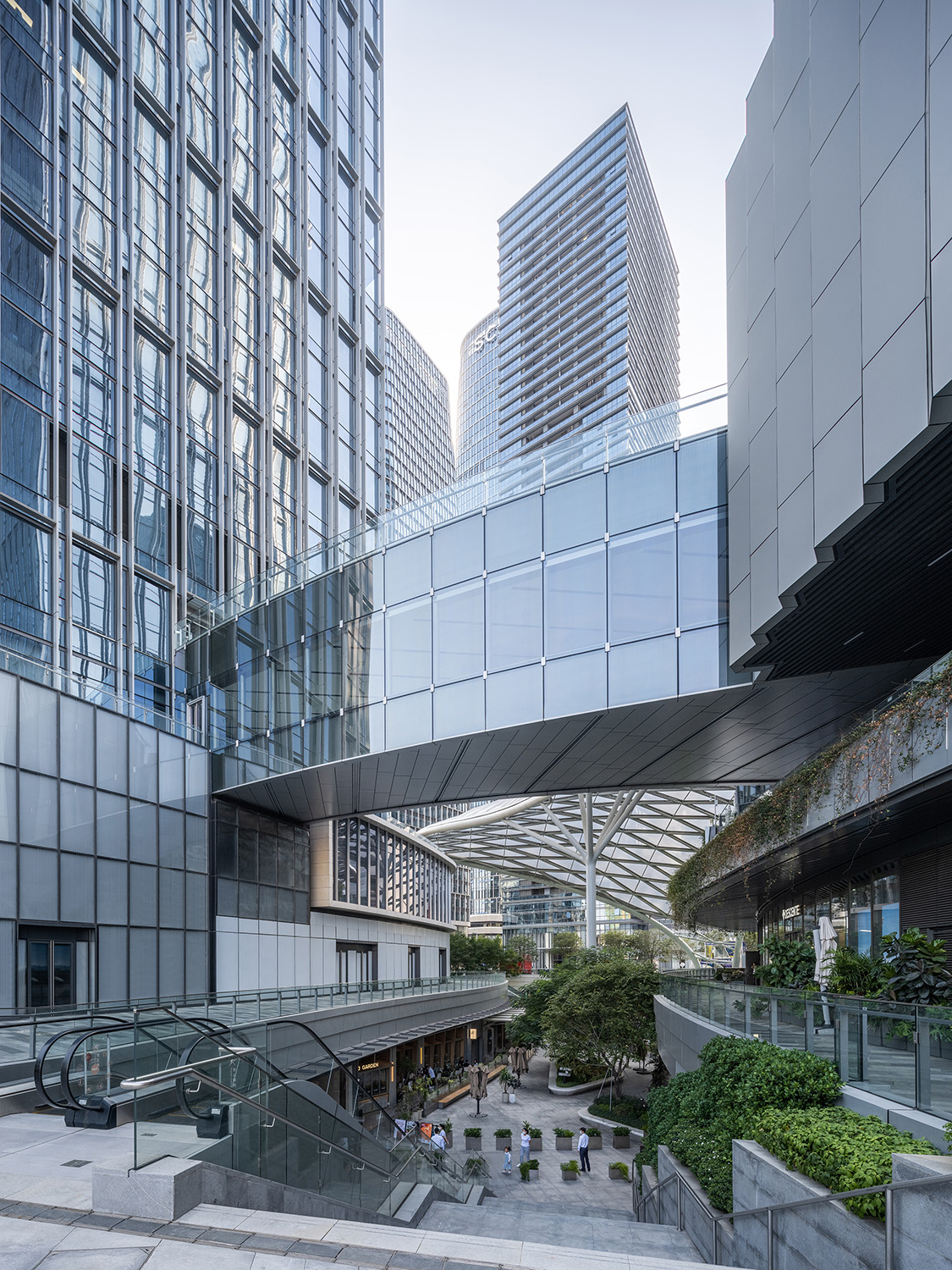
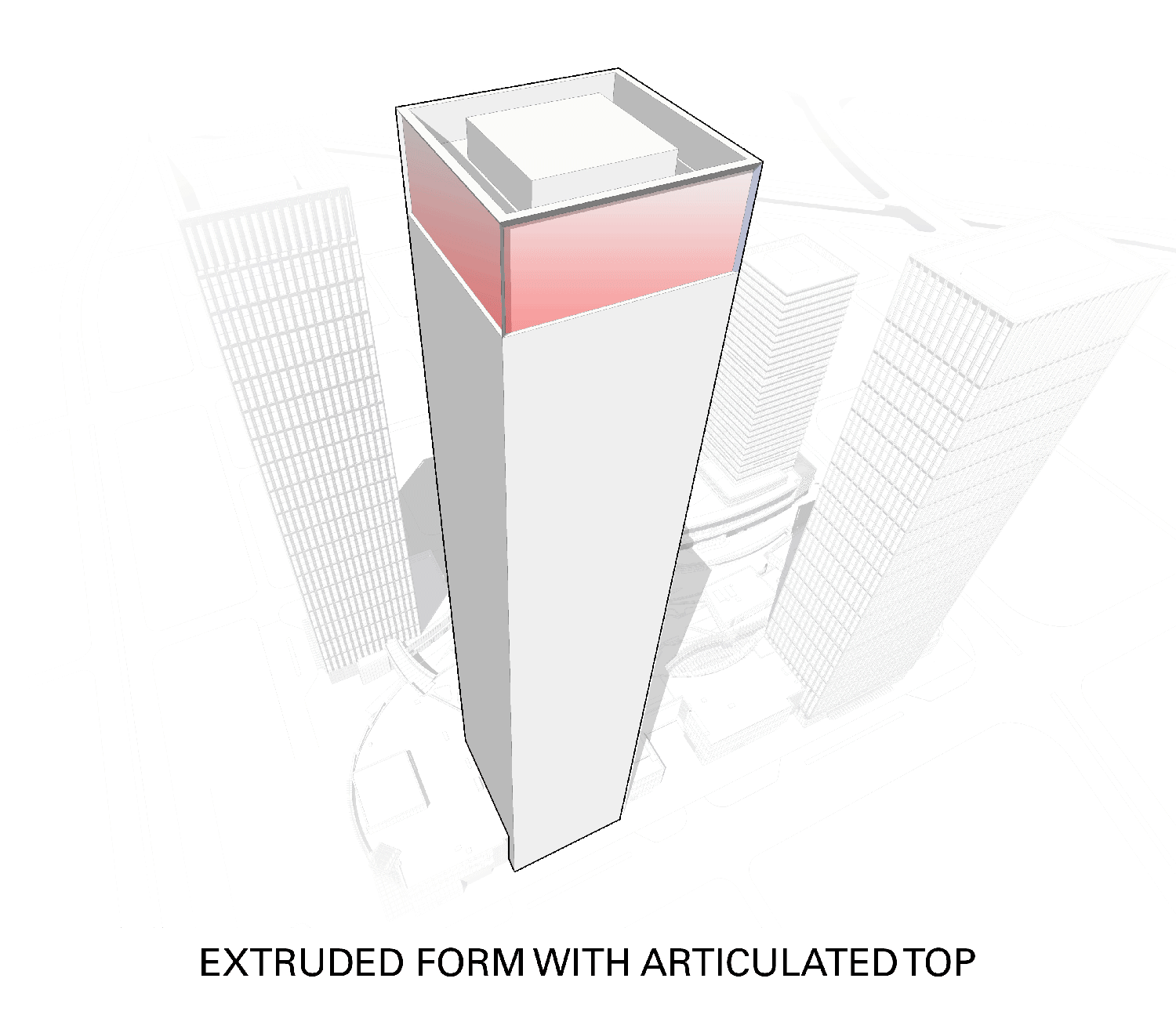
Related Stories
| Dec 10, 2013
Modular Pedia-Pod: Sustainability in healthcare construction [slideshow]
Greenbuild 2013 in Philadelphia was the site of a unique display—Pedia-Pod, a modular pediatric treatment room designed and built by NRB, in collaboration with the editors of Building Design+Construction, SGC Horizon LLC, and their team of medical design consultants.
| Dec 3, 2013
Creating a healthcare capital project plan: The truth behind the numbers
When setting up a capital project plan, it's one thing to have the data, but quite another to have the knowledge of the process.
| Nov 27, 2013
Pediatric hospitals improve care with flexible, age-sensitive design
Pediatric hospitals face many of the same concerns as their adult counterparts. Inpatient bed demand is declining, outpatient visits are soaring, and there is a higher level of focus on prevention and reduced readmissions.
| Nov 27, 2013
Exclusive survey: Revenues increased at nearly half of AEC firms in 2013
Forty-six percent of the respondents to an exclusive BD+C survey of AEC professionals reported that revenues had increased this year compared to 2012, with another 24.2% saying cash flow had stayed the same.
| Nov 27, 2013
Wonder walls: 13 choices for the building envelope
BD+C editors present a roundup of the latest technologies and applications in exterior wall systems, from a tapered metal wall installation in Oklahoma to a textured precast concrete solution in North Carolina.
| Nov 26, 2013
Construction costs rise for 22nd straight month in November
Construction costs in North America rose for the 22nd consecutive month in November as labor costs continued to increase, amid growing industry concern over the tight availability of skilled workers.
| Nov 25, 2013
Building Teams need to help owners avoid 'operational stray'
"Operational stray" occurs when a building’s MEP systems don’t work the way they should. Even the most well-designed and constructed building can stray from perfection—and that can cost the owner a ton in unnecessary utility costs. But help is on the way.
| Nov 19, 2013
Pediatric design in an adult hospital setting
Freestanding pediatric facilities have operational and physical characteristics that differ from those of adult facilities.
| Nov 19, 2013
Top 10 green building products for 2014
Assa Abloy's power-over-ethernet access-control locks and Schüco's retrofit façade system are among the products to make BuildingGreen Inc.'s annual Top-10 Green Building Products list.
| Nov 18, 2013
6 checkpoints when designing a pediatric healthcare unit
As more time and money is devoted to neonatal and pediatric research, evidence-based design is playing an increasingly crucial role in the development of healthcare facilities for children. Here are six important factors AEC firms should consider when designing pediatric healthcare facilities.


